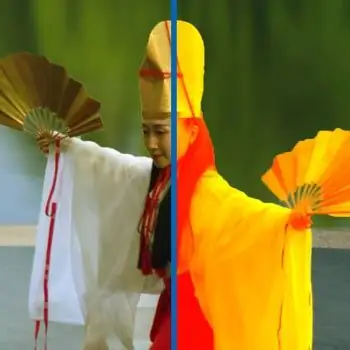Sometimes, when creating images and editing digital photographs, it becomes necessary to evenly fill one or another part of the image with a uniform color tone. This is easy to do using the tools of the Adobe Photoshop program.

Instructions
Step 1
To carry out the fill operation, you can go in several ways. If you have already selected the area on the digital image that needs to be filled, then the simplest, but not the most convenient solution will be choosing the Fill command from the Edit menu. A window for setting the fill parameters will open before you: here you can select a color and fill type - monochromatic (the main or additional working colors of the palette or any freely selectable shade, including one borrowed by the eyedropper tool directly from the image) or using patterns. Also from the list of the drop-down menu, you can select the algorithm for overlaying the fill and the level of transparency, that is, the depth and the way the effect affects the original image. The disadvantage of this method is that this operation is carried out at a time and makes irreparable changes to the digital information of the original image - you will not be able to correct or change its parameters in the future. The only salvation in this case can be only the use of the "rollback" command, the cancellation of the previous operation, ie. destruction of all work done after filling.
Step 2
Another way will be more flexible in this case. You can create a special additional layer like Fill Layer (menu Layer> New Fill Layer). This layer will occupy exactly the space that was indicated by the selection, and visually will perform the same function as the above described Fill command. The difference will be that you can subsequently change and vary the parameters of the newly created layer as many times as you like, without introducing any distortions into the original digital file - that is, reducing the loss of information to nothing, which is a more professional approach to image editing Another advantage of creating an additional layer of the Fill Layer type is the ability to create not only plain layers, but also layers with gradient fills, moreover, the gradient parameters include not only control of the color spectrum of the fill, but also various variations of the transparency of this layer. Thus, for example, you can create the effects of smooth image development through the fill, etc. It is logical that in the absence of a selection initially, the created layer will occupy the entire space of the composition, that is, it can be ideally used as the base background of a composition or a photo collage.
Step 3
Another way to fill a layer can be recommended. It is especially appropriate when the layer does not occupy the entire image space, but is a cut shape or outline, that is, it has its own transparency. In the menu of individual style settings that each layer has in Photoshop (see the fx icon at the bottom of the layers panel), there are several items related to the ability to fill the layer. These are the items Color Overlay, Gradient Overlay, Pattern Overlay (Coverage with color, gradient, pattern) - each of which can fill the entire layer accordingly. Any of these items has a fairly wide range of settings, both the color spectrum and the blending method, and, in fact, the algorithm for filling and scaling it relative to the layer. Some advantage of this filling method is that each of these three fills can be combined and matched with others without creating any additional layers. In addition, of course, this method does not make any changes to the original information of the file, thereby ensuring the safety of the image and the ability to modify and vary the fill parameters an unlimited number of times.






